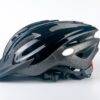Tag: Bike
What is a Comfort Bike? [MEANING + PURPOSE EXPLAINED]
Bicycles come in many shapes and sizes, and for good reasons. A featherweight, carbon-framed wonder is no good for riding to the shops for a pint of milk and some bread. Similarly, a commuter-orientated bike won’t be the best choice for riding some local off-road trails. ‘Comfort’ is a relatively new term in the cycling sphere and one some use to classify this type of bike. Searching the internet for a comfort bike might make you think other bikes are uncomfortable. Whilst that’s not strictly true, comfort bikes prioritise how riders feel when riding. Comfort is key. So much so in fact, that other bicycle attributes like speed, utility or versatility may fall by the wayside. This Discerning Cyclist guide…
The Best Bike Lanes in the World: 12 Cities Doing it Right
Cycling in urban environments can be one of life’s greatest joys. Feeling the wind in your hair, seeing a city in a beautiful new way, and exploring the nooks and crannies beyond well-trodden paths are all things that city cyclists love about travelling on two wheels. In this piece, we’ll explore some of the best cities in the world for cyclists – from infrastructure to environment to culture, these are the best spots across the globe to take your bike on an urban adventure. What Makes a “Bike-Friendly City”? When we’re deciding what makes a ‘bike friendly city’, we’re looking for the following things: Great cycling infrastructure, including protected lanes Deprioritisation of cars in favour of bicycles Popularity of cycling…
Bike Helmet Statistics: 51 Stats on Usage and Safety
While riding your bike it’s a good idea to protect yourself by using a helmet. Your head is obviously a very important part of your body to protect, to prevent brain injuries and death from occurring upon impact. As more people globally turn to bikes, in some countries (as well as cities), such as Australia, it’s a legal requirement to wear a helmet while riding a bike. Not only that, but the helmets have to be approved by the government and fastened up properly. Elsewhere, helmets should be marked with the safety standard EN 1078 for adults or EN 1080 for children, to show they’ve passed safety regulations. But are helmets really needed? In many countries such as the Netherlands…
Bike Commuting Statistics: 74 Cycling to Work Stats [2023]
Cycling to work has become an increasingly popular form of transportation, with more people opting for a healthy and environmentally friendly mode of travel. With the rise of bike commuting, it’s important to understand the impact it has on cities and communities. This post presents 75 key statistics on bike commuting, providing insights on the number of people cycling to work, the benefits of cycling, and the challenges faced by cyclists. From the average distance cycled by commuters to the reasons why people choose to cycle, these stats paint a picture of the current state of bike commuting and its future potential. Let’s dive in. Bike Commuting Statistics There are around 1 billion bikes in the world. (Statista) In some…
Electric Bike Statistics: 68 Incredible Stats About E-Bikes
There’s no denying that electric bikes are very exciting. They give cyclists a way to go further and faster without having to work harder, resulting in a more enjoyable ride that doesn’t leave you drenched in sweat. However, people still have a lot of questions about electric bikes, which is understandable seeing as their popularity is still relatively new. There are many cyclists who are intrigued by the concept of an e-bike, but are wary of shelling out a lot of money for something that might just be a gimmick, or that they feel they might not use as much as a regular bike. Here, we’ve created a one-stop-shop of electric bike statistics and facts to help you understand e-bikes…
Bike Tires That Don’t Puncture [3 Puncture-Proof Tires]
A saucepan, a garden spade or a backpack. Three utilitarian items that, when well designed, perform their job without even so much as a modicum of fuss. So well in fact that you may never notice their intricacies or foibles. Bike tires (or tyres) can and will fit into this narrative, barring one chin-scratching, angst-inducing event – a puncture. Punctures can, at best, ruin a glorious sunny ride or make you late for work. At worst, a punctured bike tire can quickly render a bike dangerous to ride. For most cyclists, including us here at Discerning Cyclist, a riding life is never truly puncture-free. But, with a little bit of care and attention, some steps can be taken to reduce…
500W Electric Bike Guide [Hills, Top Speed + More]
Ignore the sceptics – electric bikes are the business. Power over hills, get one over on local traffic, wave goodbye to public transport, and have fun doing it! For electric bike converts like ourselves, e-bike wattage is one of the first topics would-be buyers hit upon. 500W e-bikes are a popular rating. But how fast can a 500W electric bike go? How far can it be ridden? In this article, Discerning Cyclist will aim to answer those questions (and much more besides). E-Bike Wattage [EXPLAINED] The wattage of an e-bike refers to the power output of its motor. This figure can be calculated as follows – bear with us here because this is important – multiply the voltage supplied by the battery…
Bike Pedals for Commuting [The Ultimate Pedal Guide]
Pedals are vital for stable and comfortable cycling. They’re one of the three contact points between rider and bike. Their purpose is to transfer the power created by the rider’s legs. Commuters and sports cyclists have different requirements from their pedals. Road racers and mountain bikers rely on being able to guarantee a fixed foot position, to stomp down consistent power. They also need quick release mechanisms. Commuters don’t need these features. How Do Bike Pedals Work? Bike pedals convert power to move the bicycle. You’d have to run with the bike underneath you if you didn’t have them. They’re fixed to one end of cranks, and work together with a chain and gearing to propel you. You place your…
![What is a Comfort Bike? [MEANING + PURPOSE EXPLAINED]](http://bicycle.org/wp-content/uploads/2023/03/Best-Comfort-Bike-1-100x100.jpg)


![Bike Commuting Statistics: 74 Cycling to Work Stats [2023]](http://bicycle.org/wp-content/uploads/2023/02/3-2-1024x684-1-100x100.jpg)

![Bike Tires That Don’t Puncture [3 Puncture-Proof Tires]](http://bicycle.org/wp-content/uploads/2023/01/schwalbe-puncture-proof-tire-1024x684-1-100x100.jpg)
![500W Electric Bike Guide [Hills, Top Speed + More]](http://bicycle.org/wp-content/uploads/2023/01/e-bikes-forest-trail-1024x684-1-100x100.jpg)
![Bike Pedals for Commuting [The Ultimate Pedal Guide]](http://bicycle.org/wp-content/uploads/2023/01/bike-pedals-metal-1024x684-1-100x100.jpg)